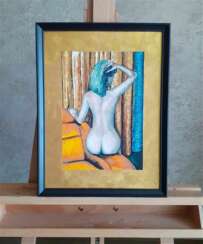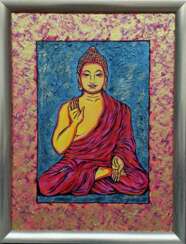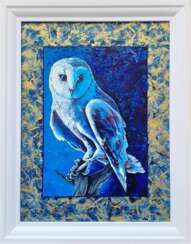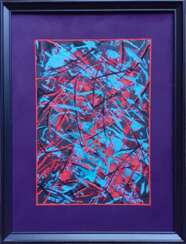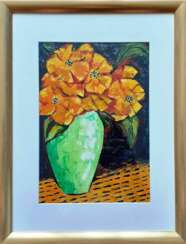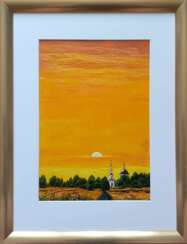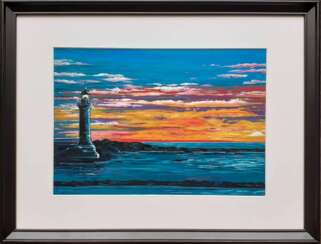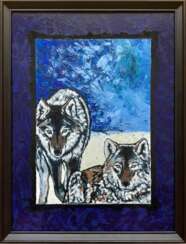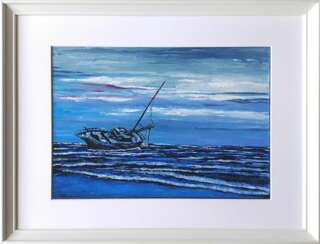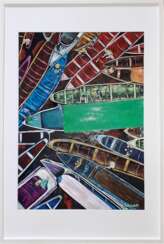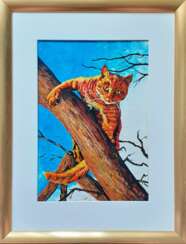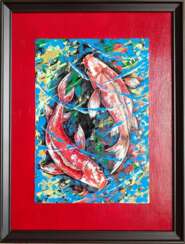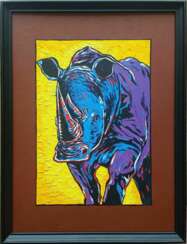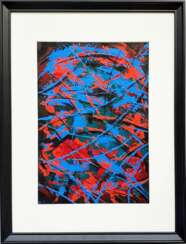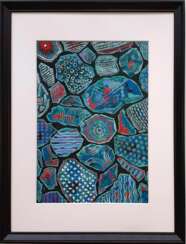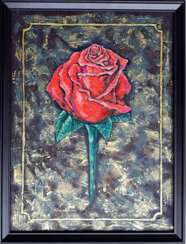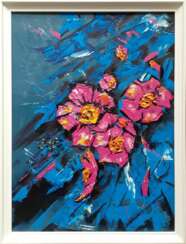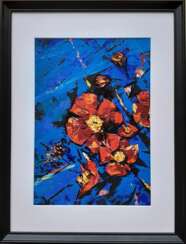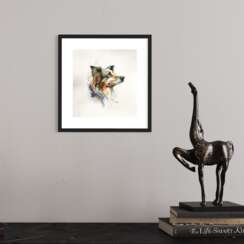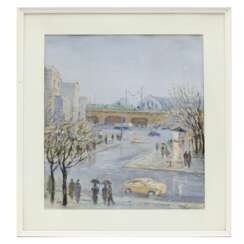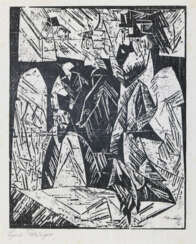559 Items by auctions and galleries:
passe-partout
Reflection
Vyacheslav IG (b. 1964)  Shop IG Vyacheslav
Shop IG Vyacheslav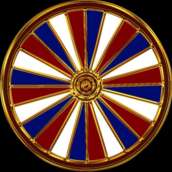

Vyacheslav IG
17.05.1964
Russia
I was born and live in Russia, in the city of Samara.
From time to time in different years of his life he drew pictures and cartoons. I have been doing oil painting since 1998. He painted pictures for several years. Then there was a break.
For the last few years I have been doing oil and acrylic paintings on canvas and hardboard. I like this activity. Many works have been sold and donated. So I decided to participate on the VIL site.
Я родился и живу в России, в городе Самара.
Время от времени? в разные годы жизни я рисовал картины и карикатуры. Занимаюсь масляной живописью с 1998 года. Несколько лет писал картины. Потом был перерыв.
Последние несколько лет я делаю картины маслом и акрилом на холсте и оргалите. Мне нравится это занятие. Многие работы были проданы и подарены. Поэтому я решил участвовать на сайте VIL

Artist shop
IG Vyacheslav
Russia
Number of products: 103
ORANGE FLOWERS
Vyacheslav IG (b. 1964)  Shop IG Vyacheslav
Shop IG Vyacheslav

Vyacheslav IG
17.05.1964
Russia
I was born and live in Russia, in the city of Samara.
From time to time in different years of his life he drew pictures and cartoons. I have been doing oil painting since 1998. He painted pictures for several years. Then there was a break.
For the last few years I have been doing oil and acrylic paintings on canvas and hardboard. I like this activity. Many works have been sold and donated. So I decided to participate on the VIL site.
Я родился и живу в России, в городе Самара.
Время от времени? в разные годы жизни я рисовал картины и карикатуры. Занимаюсь масляной живописью с 1998 года. Несколько лет писал картины. Потом был перерыв.
Последние несколько лет я делаю картины маслом и акрилом на холсте и оргалите. Мне нравится это занятие. Многие работы были проданы и подарены. Поэтому я решил участвовать на сайте VIL

Artist shop
IG Vyacheslav
Russia
Number of products: 103
Landscape with a Temple
Vyacheslav IG (b. 1964)  Shop IG Vyacheslav
Shop IG Vyacheslav

Vyacheslav IG
17.05.1964
Russia
I was born and live in Russia, in the city of Samara.
From time to time in different years of his life he drew pictures and cartoons. I have been doing oil painting since 1998. He painted pictures for several years. Then there was a break.
For the last few years I have been doing oil and acrylic paintings on canvas and hardboard. I like this activity. Many works have been sold and donated. So I decided to participate on the VIL site.
Я родился и живу в России, в городе Самара.
Время от времени? в разные годы жизни я рисовал картины и карикатуры. Занимаюсь масляной живописью с 1998 года. Несколько лет писал картины. Потом был перерыв.
Последние несколько лет я делаю картины маслом и акрилом на холсте и оргалите. Мне нравится это занятие. Многие работы были проданы и подарены. Поэтому я решил участвовать на сайте VIL

Artist shop
IG Vyacheslav
Russia
Number of products: 103
Vyacheslav IG (b. 1964)  Shop IG Vyacheslav
Shop IG Vyacheslav

Vyacheslav IG
17.05.1964
Russia
I was born and live in Russia, in the city of Samara.
From time to time in different years of his life he drew pictures and cartoons. I have been doing oil painting since 1998. He painted pictures for several years. Then there was a break.
For the last few years I have been doing oil and acrylic paintings on canvas and hardboard. I like this activity. Many works have been sold and donated. So I decided to participate on the VIL site.
Я родился и живу в России, в городе Самара.
Время от времени? в разные годы жизни я рисовал картины и карикатуры. Занимаюсь масляной живописью с 1998 года. Несколько лет писал картины. Потом был перерыв.
Последние несколько лет я делаю картины маслом и акрилом на холсте и оргалите. Мне нравится это занятие. Многие работы были проданы и подарены. Поэтому я решил участвовать на сайте VIL

Artist shop
IG Vyacheslav
Russia
Number of products: 103
ВОЛКИ
Vyacheslav IG (b. 1964)  Shop IG Vyacheslav
Shop IG Vyacheslav

Vyacheslav IG
17.05.1964
Russia
I was born and live in Russia, in the city of Samara.
From time to time in different years of his life he drew pictures and cartoons. I have been doing oil painting since 1998. He painted pictures for several years. Then there was a break.
For the last few years I have been doing oil and acrylic paintings on canvas and hardboard. I like this activity. Many works have been sold and donated. So I decided to participate on the VIL site.
Я родился и живу в России, в городе Самара.
Время от времени? в разные годы жизни я рисовал картины и карикатуры. Занимаюсь масляной живописью с 1998 года. Несколько лет писал картины. Потом был перерыв.
Последние несколько лет я делаю картины маслом и акрилом на холсте и оргалите. Мне нравится это занятие. Многие работы были проданы и подарены. Поэтому я решил участвовать на сайте VIL

Artist shop
IG Vyacheslav
Russia
Number of products: 103
Old ship
Vyacheslav IG (b. 1964)  Shop IG Vyacheslav
Shop IG Vyacheslav

Vyacheslav IG
17.05.1964
Russia
I was born and live in Russia, in the city of Samara.
From time to time in different years of his life he drew pictures and cartoons. I have been doing oil painting since 1998. He painted pictures for several years. Then there was a break.
For the last few years I have been doing oil and acrylic paintings on canvas and hardboard. I like this activity. Many works have been sold and donated. So I decided to participate on the VIL site.
Я родился и живу в России, в городе Самара.
Время от времени? в разные годы жизни я рисовал картины и карикатуры. Занимаюсь масляной живописью с 1998 года. Несколько лет писал картины. Потом был перерыв.
Последние несколько лет я делаю картины маслом и акрилом на холсте и оргалите. Мне нравится это занятие. Многие работы были проданы и подарены. Поэтому я решил участвовать на сайте VIL

Artist shop
IG Vyacheslav
Russia
Number of products: 103
Rhino
Vyacheslav IG (b. 1964)  Shop IG Vyacheslav
Shop IG Vyacheslav

Vyacheslav IG
17.05.1964
Russia
I was born and live in Russia, in the city of Samara.
From time to time in different years of his life he drew pictures and cartoons. I have been doing oil painting since 1998. He painted pictures for several years. Then there was a break.
For the last few years I have been doing oil and acrylic paintings on canvas and hardboard. I like this activity. Many works have been sold and donated. So I decided to participate on the VIL site.
Я родился и живу в России, в городе Самара.
Время от времени? в разные годы жизни я рисовал картины и карикатуры. Занимаюсь масляной живописью с 1998 года. Несколько лет писал картины. Потом был перерыв.
Последние несколько лет я делаю картины маслом и акрилом на холсте и оргалите. Мне нравится это занятие. Многие работы были проданы и подарены. Поэтому я решил участвовать на сайте VIL

Artist shop
IG Vyacheslav
Russia
Number of products: 103
Reflection - 2
Vyacheslav IG (b. 1964)  Shop IG Vyacheslav
Shop IG Vyacheslav

Vyacheslav IG
17.05.1964
Russia
I was born and live in Russia, in the city of Samara.
From time to time in different years of his life he drew pictures and cartoons. I have been doing oil painting since 1998. He painted pictures for several years. Then there was a break.
For the last few years I have been doing oil and acrylic paintings on canvas and hardboard. I like this activity. Many works have been sold and donated. So I decided to participate on the VIL site.
Я родился и живу в России, в городе Самара.
Время от времени? в разные годы жизни я рисовал картины и карикатуры. Занимаюсь масляной живописью с 1998 года. Несколько лет писал картины. Потом был перерыв.
Последние несколько лет я делаю картины маслом и акрилом на холсте и оргалите. Мне нравится это занятие. Многие работы были проданы и подарены. Поэтому я решил участвовать на сайте VIL

Artist shop
IG Vyacheslav
Russia
Number of products: 103
Reflection - 3
Vyacheslav IG (b. 1964)  Shop IG Vyacheslav
Shop IG Vyacheslav

Vyacheslav IG
17.05.1964
Russia
I was born and live in Russia, in the city of Samara.
From time to time in different years of his life he drew pictures and cartoons. I have been doing oil painting since 1998. He painted pictures for several years. Then there was a break.
For the last few years I have been doing oil and acrylic paintings on canvas and hardboard. I like this activity. Many works have been sold and donated. So I decided to participate on the VIL site.
Я родился и живу в России, в городе Самара.
Время от времени? в разные годы жизни я рисовал картины и карикатуры. Занимаюсь масляной живописью с 1998 года. Несколько лет писал картины. Потом был перерыв.
Последние несколько лет я делаю картины маслом и акрилом на холсте и оргалите. Мне нравится это занятие. Многие работы были проданы и подарены. Поэтому я решил участвовать на сайте VIL

Artist shop
IG Vyacheslav
Russia
Number of products: 103
LONE ROSE
Vyacheslav IG (b. 1964)  Shop IG Vyacheslav
Shop IG Vyacheslav

Vyacheslav IG
17.05.1964
Russia
I was born and live in Russia, in the city of Samara.
From time to time in different years of his life he drew pictures and cartoons. I have been doing oil painting since 1998. He painted pictures for several years. Then there was a break.
For the last few years I have been doing oil and acrylic paintings on canvas and hardboard. I like this activity. Many works have been sold and donated. So I decided to participate on the VIL site.
Я родился и живу в России, в городе Самара.
Время от времени? в разные годы жизни я рисовал картины и карикатуры. Занимаюсь масляной живописью с 1998 года. Несколько лет писал картины. Потом был перерыв.
Последние несколько лет я делаю картины маслом и акрилом на холсте и оргалите. Мне нравится это занятие. Многие работы были проданы и подарены. Поэтому я решил участвовать на сайте VIL

Artist shop
IG Vyacheslav
Russia
Number of products: 103
Bright Flowers
Vyacheslav IG (b. 1964)  Shop IG Vyacheslav
Shop IG Vyacheslav

Vyacheslav IG
17.05.1964
Russia
I was born and live in Russia, in the city of Samara.
From time to time in different years of his life he drew pictures and cartoons. I have been doing oil painting since 1998. He painted pictures for several years. Then there was a break.
For the last few years I have been doing oil and acrylic paintings on canvas and hardboard. I like this activity. Many works have been sold and donated. So I decided to participate on the VIL site.
Я родился и живу в России, в городе Самара.
Время от времени? в разные годы жизни я рисовал картины и карикатуры. Занимаюсь масляной живописью с 1998 года. Несколько лет писал картины. Потом был перерыв.
Последние несколько лет я делаю картины маслом и акрилом на холсте и оргалите. Мне нравится это занятие. Многие работы были проданы и подарены. Поэтому я решил участвовать на сайте VIL

Artist shop
IG Vyacheslav
Russia
Number of products: 103
Red Flowers
Vyacheslav IG (b. 1964)  Shop IG Vyacheslav
Shop IG Vyacheslav

Vyacheslav IG
17.05.1964
Russia
I was born and live in Russia, in the city of Samara.
From time to time in different years of his life he drew pictures and cartoons. I have been doing oil painting since 1998. He painted pictures for several years. Then there was a break.
For the last few years I have been doing oil and acrylic paintings on canvas and hardboard. I like this activity. Many works have been sold and donated. So I decided to participate on the VIL site.
Я родился и живу в России, в городе Самара.
Время от времени? в разные годы жизни я рисовал картины и карикатуры. Занимаюсь масляной живописью с 1998 года. Несколько лет писал картины. Потом был перерыв.
Последние несколько лет я делаю картины маслом и акрилом на холсте и оргалите. Мне нравится это занятие. Многие работы были проданы и подарены. Поэтому я решил участвовать на сайте VIL

Artist shop
IG Vyacheslav
Russia
Number of products: 103
Lot 106 Janssen, Horst (1929-1995) ‘Speicherstadt’ 1958, c…
Horst Janssen (1929 - 1995)  A130: Post War Art & Design and Classic African Art
A130: Post War Art & Design and Classic African Art 

Horst Janssen
14.11.1929 - 31.08.1995
Germany
Horst Janssen was a German graphic artist, printmaker, poster and illustrator. He created many drawings, etchings, woodcuts, lithographs, and woodcuts.
There is a museum dedicated to his legacy in Horst Janssen's hometown of Oldenburg. His works are represented internationally in major museums.

Auktionshaus Kendzia
A130: Post War Art & Design and Classic African Art
Date: 24.01.2026 10:00 UTC +01:00
Number of lots in the catalog: 454
Lot 108 Janssen, Horst (1929-1995) ‘Revolution’ 1961, colo…
Horst Janssen (1929 - 1995)  A130: Post War Art & Design and Classic African Art
A130: Post War Art & Design and Classic African Art 

Horst Janssen
14.11.1929 - 31.08.1995
Germany
Horst Janssen was a German graphic artist, printmaker, poster and illustrator. He created many drawings, etchings, woodcuts, lithographs, and woodcuts.
There is a museum dedicated to his legacy in Horst Janssen's hometown of Oldenburg. His works are represented internationally in major museums.

Auktionshaus Kendzia
A130: Post War Art & Design and Classic African Art
Date: 24.01.2026 10:00 UTC +01:00
Number of lots in the catalog: 454





